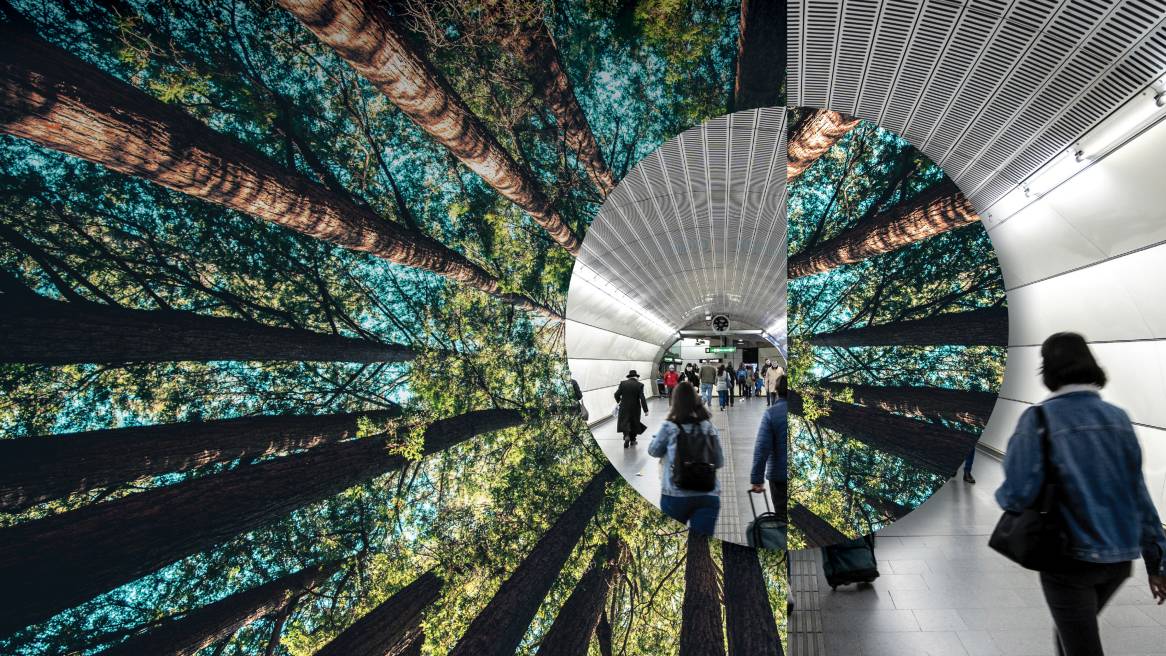Building a Healthy Planet through Decarbonization
Steelcase made news recently by announcing it has become carbon neutral and, even more significant, it set science-based targets that intends to achieve by 2030.
360 spoke with Maeve Tropf, supervisor of energy, climate and renewables at Steelcase, about why the company has made this commitment, what steps it’s taking to achieve it and how these actions address the most important sustainability issue the world faces today.
360: What does it mean for Steelcase to be the industry leader in addressing climate change? Why is this important?
Maeve Tropf: At Steelcase, sustainability has been a big part of our culture for a long time. Thanks to the efforts of our founders, we’ve been recognized as one of the earliest manufacturers to prioritize high environmental standards.
Greenhouse gas emissions in our atmosphere have steadily increased since the world became industrialized, and this is the primary cause of the human-influenced climate change we are experiencing today. Already, people in parts of the world have begun to experience negative impacts of climate change, such as flooding and extreme heat waves. And the science tells us that we’re headed toward some really drastic, destabilizing conditions unless we get emissions under control through significant reductions and removing as much carbon from the atmosphere as we emit — in other words, unless we collectively become carbon neutral by 2050.
And yet, despite our achievements far surpassing our previous emissions reduction targets or becoming carbon neutral this year, a really big deal for us – we realized that this is just the beginning. We need to do more, because climate change is the most pressing environmental crisis the world is facing. The enormity of it is a bit terrifying, but as a manufacturer, we know that we have a big role to play in being part of the collective solution, and our impact can be lasting.
So, over the next decade, we plan to reduce our emissions at the rate that’s needed to help prevent the worst impacts of climate change. We’re joining with other pioneering companies worldwide who share the commitment, and we hope our actions will help inspire and empower others.
360: What does it mean for Steelcase to become carbon negative by 2030? Why will it take 10 years?
MT: Without broad market consensus on these types of corporate commitments, it’s our belief that going above and beyond carbon neutral or into the carbon negative space can’t happen until the hard work has been done to reduce emissions in line with climate science. Period.
To do this, we looked to the Science Based Targets initiative (SBTi) for best practices, trajectories and metrics based on an absolute contraction methodology for what we need to achieve. We chose the most ambitious trajectory. It will require some strategic investments and can’t happen all at once. But with planning, we’re confident it’s doable within this decade.
Our targets are aligned with the most ambitious recommendation of the Paris Agreement to limit global temperature rise to no more than 1.5 degrees Celsius. That may not sound like much, but it is. For comparison, scientists say that if global warming were to increase significantly beyond 2 degrees Celsius, we‘d experience dramatic and dire consequences. It’s important to recognize this is a tremendous undertaking, and we believe setting science-based targets is the most important component of our strategy and translates to a 50% emissions reduction by 2030.
2030, the date by which we aim to achieve our science-aligned emissions reductions is also the date by which we plan to become carbon negative — and this is deliberate. At the 2030 inflection point, we will evaluate our progress and our existing investments. While both additional absolute reductions through things like energy efficiency and sustained financing of carbon offset projects would get us there, the former is the preferred business approach. Because offsets are a compensation mechanism for emissions taking place elsewhere, and diminishing actual emissions is the priority both for our bottom line and for the environment.
360: How does Steelcase plan to hit a 50% reduction target?
MT: We’ve already identified more than 40 opportunities — things like continuing to convert our facilities to LED lighting, installing advanced controls and occupancy sensors and conducting audits to identify air leaks and, of course, fix them.
We’re also looking at the possibility of procuring renewable energy directly in markets where it’s available, instead of procuring fossil fuel generated energy for our operations. As well, we’re considering the viability of installing solar panels in some of our locations to produce clean and renewable energy onsite. That’s a big investment for sure, but it would also adequately display the nature of our commitment and could secure savings over its lifetime.
360: OK, you’ve convinced me that Steelcase is seriously committed to becoming carbon negative for its own operations. But realistically, how much can just one company achieve? And what do you see looking forward?
MT: It’s true, even though Steelcase has locations around the world and employs over 12,700 people, we’re still relatively small compared to all other carbon emitters in today’s economy. So, as demanding as this effort is for us, we know that addressing climate change requires collective action.
It is also true that our emissions beyond our own operations account for a significant portion of our total impact. Our plan also involves urging others to come along with us on this journey.
We’ll be encouraging most of our suppliers to set their own science-based targets, as securing their participation is also one of our targets by 2025. And we’ll be engaging with customers to identify ways we can help them achieve their own goals, whether that’s through sharing best practices, developing different product offerings or meeting new expectations they may establish for suppliers they want to continue doing business with over time.
There are also things like travel — anytime one of us jumps in a car or flight on behalf of the company, there are carbon consequences. Similarly, with waste generated during our manufacturing process, there are many indirect emissions associated with our business that we’re actively working to reduce through our new targets, that extend well beyond the four walls of our organization.
We’re also raising awareness through proactive advocacy efforts. Whether here in the US or abroad, this conversation is happening at the local, regional and national levels, and we’re looking for ways we can engage, learn and make progress together globally.
There definitely needs to be a broad ripple effect involved in building a decarbonized economy. While it’s true Steelcase can only achieve so much on our own, we’re also convinced we have an important role to play. As our CEO recently said, “We are only one company, but as the industry leader, we have a corporate responsibility to take on global challenges and inspire others. Business can be a force for good and we hope you’ll join us in making a difference.”
 Maeve Tropf leads the energy, climate and renewables team at Steelcase Inc., which is responsible for developing the recently announced corporate carbon strategy that includes becoming operationally carbon neutral, ambitious science-based greenhouse gas emissions targets and a commitment to become carbon negative.
Maeve Tropf leads the energy, climate and renewables team at Steelcase Inc., which is responsible for developing the recently announced corporate carbon strategy that includes becoming operationally carbon neutral, ambitious science-based greenhouse gas emissions targets and a commitment to become carbon negative.


